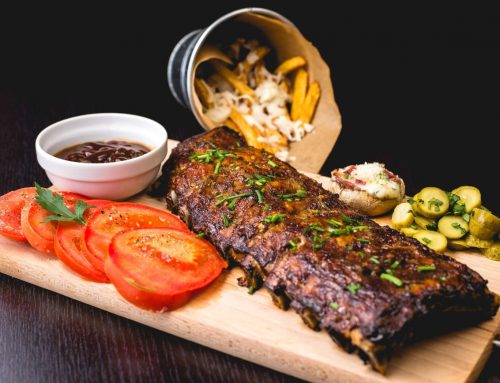English food at its best is hearty, simple, delicious fare, developed to fuel an empire that influenced the rest of the world. English cooking is steeped in history, yet the modern face of British food presents a dynamic and thriving cuisine now followed intensely by foodies around the globe.
A Brief History
Since ancient times, English food has been influenced by foreign invaders. First came the Vikings, followed by the Romans, and even the French made their mark. All of them brought their own influence to the English table, a melting pot of ingredients and foods.
The impact of the Franco-Normans is clearly reflected in the common use of their spices: saffron, mace, nutmeg, pepper, ginger, and sugar. Medieval English cookery abounds with recipes containing these exotic contributions, and these ingredients are still found in traditional recipes.
The British Empire
The British Empire’s colony in East Asia brought tea to England, and in return, the English took it to India, another one of their colonial outposts. From the English relationship with India came the obsession with curry, spicy sauces, and condiments which now are such an intrinsic part of English cuisine.
The World Wars
Immense damage was inflicted on English cookery throughout two world wars; the war effort used up all available goods and services, leaving little for private consumption.
During the Second World War, food rationing of the most essential ingredients—meat, sugar, butter, and eggs—continued until early into the 1950s. It is from these years that England gained a reputation for poor cooking and became a gastronomic joke worldwide.
Back on the Map
Though it has taken many years to overcome, English food is no longer the butt of the joke. England has regained its reputation for some of the finest foods, best chefs, and renowned restaurants.
Several notable upsets in the food world created a change in the English diet, namely Hoof-and-Mouth Disease, the Horse Meat Scandal, and a deep monetary recession in the early part of the 21st century. What emerged was a massive resurgence of traditional English foods, recipes, and cooking, using locally-produced seasonal foods wherever possible. England now leads where once they struggled to be taken seriously.
Traditions and Favorite Dishes
English food traditions are many and varied. Who hasn’t heard of afternoon tea, the full English breakfast, a Sunday roast, or the hallowed British pub?
So rich and diverse is English food, that England boasts no less than three national dishes: Roast beef and Yorkshire pudding, fish and chips, and—their controversial third—chicken tikka masala. Some say this is the new national dish, one that has evolved from the extensive migration into the country from India and Pakistan. Regardless of the debate surrounding it, it is most certainly an English favorite.
British puddings are renowned. Often steamed or baked (as in spotted dick) and served with custard, they are the perfect dish on a wet winter’s day. But puddings are not always sweet, like the savory steak and kidney pudding.
Source: The Spruce Eats





